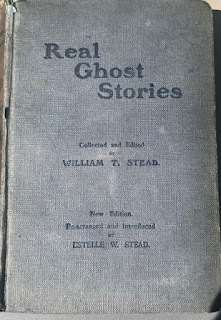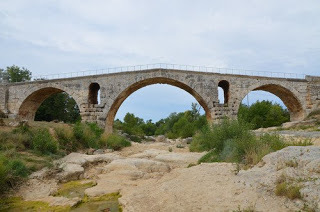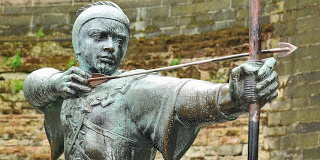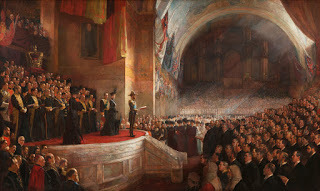Rupert Matthews's Blog, page 8
June 30, 2020
Countdown to the English Civil War

The problem with King Charles I would prove to be that he had no common sense at all. For centuries the English coronation ceremony had included two elements: blessing with holy oil, giving God’s sanction, and acclamation by the congregation, bestowing the approval of the people of England. Under English custom, the king had always ruled with the consent of the people - and more than one king had been removed when that consent ended. But in the 1580s a French philosopher named Jean Bodin had developed the theory of “Divine Right”, based on the French way of doing things. This theory stated that kings were chosen by God, since it was God who had decided who should be the oldest surviving son of the previous monarch. Bodin believed that it followed that opposing the will of the monarch was equivalent to sacrilege and was therefore illegal. Effectively this was a theory that justified the autocratic and arbitrary rule of the French monarchs. Very useful it was to French monarchs who were struggling with a restive nobility, and other European monarchs picked it up as a useful tool to use in their kingdoms. Charles of England adopted the theory as well. Unlike the other monarchs, however, he did not just use it as a political tool. He actually believed it to be literally true. God had made him king, equipped him with the wisdom needed to rule and decreed that anyone who disagreed was not just wrong but immoral and sacrilegious to boot. Whatever the disputes Charles had with his nobles, his bishops or his Parliament were made ten times worse by Charles’s absolute belief that he was totally right all the time about everything, and that everyone else was wrong. Disputes there were in plenty about economics, taxation, religion and a host of other subjects. Trouble, when it came, was provoked by Charles. On 4 January 1642 he marched into a meeting of Parliament, backed by a squad of armed soldiers to arrest five Members of Parliament. The five MPs had already fled, but Charles’s use of naked force was a step from which there was no turning back. Both Charles and Parliament began issuing orders to government officials around the country, some chose to follow orders from the king, others those from Parliament. On 22 August 1642 Charles raised the Royal Standard in Nottingham and issued a Commission of Array, that called out the militias of England to support him against the men he named as traitors - various MPs and Parliamentary officials. A week later Parliament responded by issuing the Militia Ordinance, calling out the militia to support them instead. At first the royalist cause drew its support from the north and west, with more support in rural areas. Parliament had the backing of the south and east, and most of the cities. That said, most of England refused to join the fighting and hoped the trouble would soon be over. It was not to be.

Published on June 30, 2020 09:22
The German Plan for the Battle of Verdun 1916

82 The Verdun Plan
The city of Verdun on the River Meuse had been a fortified city since the days of the Roman Empire. From the early 17th century it was one of France’s main army depots and a powerful fortress. In 1914 it had famously held out against a German attack.
German commander von Falkenhayn studied French history. He believed that the French would do almost anything to stop the Germans from capturing Verdun.
The area around Verdun was a quiet sector. On one occasion a sudden flash flood washed away the earth between a German trench and a French trench. The men ignored their enemies while they hurriedly dug new trenches.
The steep hills and deep gullies of the area around Verdun were good for defence. On them the French had built a series of forts, each containing underground shelters and guns set in concrete and metal emplacements.
The most powerful was Fort Douaumont. It had heavy artillery, light artillery, machine guns and miles of underground tunnels.
Falkenhayn decided to attack Verdun, but not with any intention of capturing the city or forts. Instead he planned merely to pretend to try to capture them.
This would persuade the French to pour reinforcements into Verdun. Once the French were within range of German artillery, the guns would open fire and wipe them out.
Falkenhayn hoped that he could inflict huge casualties on the French army, without the Germans losing too many men. “We will bleed France white”, he said.
Kaiser Wilhelm liked the plan so much that the asked Falkenhayn to send Crown Prince Wilhelm, heir to the German throne, to be the commander. Falkenhayn arranged for experienced generals to have real control on the battlefield.
The French garrison at Verdun considered that they were safe in their forts. They allowed the outer defences of trench and barbed wire fall into disrepair.

Published on June 30, 2020 09:17
BOOK REVIEW : A General History of the Robberies & Murders of the Most Notorious Pirates by Charles Johnson

If you are even remotely interested in pirates then you absolutely must read this book.
It was written back in the 1720s, during the heyday of the pirates. The text is written by Captain Charles Johnson about whom very little is known. he was clearly a seamen as he gives a lot of details about ships and the sea. He may have been a pirate himself, and Charles Johnson may not be his real name. Some of the accounts are obviously based on the trials of the men who were hanged, but he also draws on first hand accounts of battles, robberies and adventures. The writing style is lively and gripping.
Blackbeard and Captain Kidd are here, as are Henry Avery - perhaps the most successful pirate ever - and the female pirates Mary Read and Anne Bonney. Plus several characters that I had never heard of.
There are anecdotes aplenty, lots of action and some astonishing incidents. some of these pirates seem to have been relatively honorable chaps who kept promises and spared the lives of those who surrendered without a fight. Others were absolutely terrible - indulging in sadistic killings and tortures merely for the fun of it.
As so often with contemporary accounts, it is the throw away lines that can be as interesting as the main subject. The number of native Americans found among crews surprised me, as did the sheer scale of some of these pirate voyages - ranging from the West Indies to the Arctic Circle to India and the Malay Peninsula. The seamanship of the pirates must be admired.
A great read.

Published on June 30, 2020 09:11
June 18, 2020
BOOK REVIEW - Storm of Steel by Ernst Junger
 The memoirs of a German officer who served in the trenches of the Western Front during World War I. They are based on his diary, but written up some years after the war.
The memoirs of a German officer who served in the trenches of the Western Front during World War I. They are based on his diary, but written up some years after the war. This account is brutal in its frankness about what daily life in the trenches - he does not hold back. And pretty grim it was too. The unrelenting nature of the danger from snipers, artillery and other forms of sudden death is well described and harrowing. The author takes the time to describe what dug-outs were like, how tunnelling was done, how trenches were constructed and other facts about daily life that don't always make it into the historical accounts. He also waxes lyrical about food and meals - something that was obviously important in the trenches. Loads of interesting facts and views.
Although most of the book is about the author - fair enough - he also comments on other aspects of the war. In rear areas out of reach of the shelling there were still French or Belgian civilians living in their houses. He talks a lot about the interactions between the German soldiers and these civlians - both friendly and not so pleasant. There are also comments about transport, drink, the higher command and so forth.
Having a grandfather and three great uncles in the trenches on the other side, I was interested in his comments on the differences between British and French enemies. The British are said to have had far more artillery ammunition, particularly heavy guns, and were more skilled in its use than the French. He also says that the British were more active at trench raids and similar small scale fighting. The French, however, seem to have been more adept at the slow grinding attrition of trench warfare.
My only real criticism is that this is very much the account of day to day events affecting one man. He makes little effort to place his experiences into context. For instance I was half way through the Battle of the Somme before I realised that this is what he was describing. Rather more off putting was the fact that he barely makes any effort to breathe life into his comrades in arms - even though he was in the same regiment for most of the time. They are for the most part anonymous men, sometimes described by rank. He only names a man when something is about to happen to him - being wounded, getting into trouble with a senior officers, being killed. As a result we the reader don't really care when something happens. If we had heard of these characters we might think "Oh dear, Corporal Schmidt has been wounded". But as it is, we don't.
Still, this is a fascinating and informative account of life in the trenches from the German side. If you have any interest at all in the Western Front, you should get a copy and read it.

Published on June 18, 2020 04:39
June 12, 2020
BOOK REVIEW - THE “BYSTANDER’S” FRAGMENTS FROM FRANCE by Bruce Bairnsfather

I've bought an old second hand copy with a couple of pages missing, but this is a seriously magnificent publication. Some of the cartoons are very funny indeed, others have an element of pathos to them. I must admit that there were a few that I did not really understand - maybe you had to be there, as the saying goes.
These cartoons were produced by a soldier in the trenches of World War I. While the ostensible audience was the folks back home I can't help suspecting that it was the soldiers who would have really appreciated some of these. You can see some of the class differences in these cartoons, which makes it interesting as Bairnsfather was very definitely of the officer class, while most of the heroes in the cartoons are rank and file. Indeed, the officers tend to get the mickey taken out of them somewhat. And some of them are a bit gruesome - unsurprisingly given the subject matter.
Great Stuff.


Published on June 12, 2020 00:24
June 1, 2020
BOOK REVIEW - Real Ghost Stories by William T. Stead
 I picked up the 1921 edition of this book second hand - largely because of the author.
I picked up the 1921 edition of this book second hand - largely because of the author.William T. Stead was one of the greatest newspaper editors ever. He invented things that today we take for granted - such as a headline in a bigger typeface than the story and sending reporters to go to interview people. And he died a hero's death when the Titanic went down in 1912. So when I saw this in a second hand bookshop in Hay on Wye, I pounced.
The title is, in fact, rather misleading as only a very few of the incidents recounted here are about ghosts. It is really about the supernatural more generally. Given the date this was written, Stead uses different vocabulary to describe the things he is talking about. We would refer to Crisis Apparitions, Out Of Body Experiences, ESP, Remote Viewing, Near Death Experiences and so forth. To Stead these are all "ghosts" as they are beyond the normal and I suppose he did not really know what else to call them.
Although it is nowhere stated, this book reads very much as if it is a compilation of articles that were published in Stead's newspaper at intervals over the years - most of them date to about 1870 - 1895, though there are a few earlier incidents. So what you have here is a compilation of true incidents that Stead obviously made considerable effort to track down and get eye witness accounts about. He is also keen to emphasise that the eye witnesses are all sober and respectable persons - including a good smattering of clergymen - so as to avoid suspicious that we are dealing with a bunch of uneducated drunks. But that is all this is - a compilation of anecdotes. There is no real effort made to analyse the incidents.
A very interesting book that includes dozens of incidents that I had never heard of before.
£1 well spent!

Published on June 01, 2020 07:43
May 30, 2020
Ancient Roman Bridges and Arches
 The Romans knew that crossing rivers was often the most difficult part of a journey by road. People might get wet or lose possessions when crossing, and if the river was particularly full there might be a long delay.
The Romans knew that crossing rivers was often the most difficult part of a journey by road. People might get wet or lose possessions when crossing, and if the river was particularly full there might be a long delay. Fords could be built up where the river was wide and shallow. Large quantities of stone and rock would be dumped into the river to form a firm foundation. On top of this was laid a flagstone surface, like an underwater road.
Bridges were more effective where rivers were deeper or narrower. A narrow stream could be crossed by a single stone arch, which supported a humped road surface above.
Wider rivers had to be crossed by bridges with more than one arch. Each arch was supported midstream by an artificial tower built up from the riverbed.
First the engineers hammered a circle of wooden stakes into the riverbed to form a watertight compartment. The water was pumped out and workmen dug out the riverbed to remove loose mud and reveal a firm surface.
A stone tower, called a pier, was then built up to stand about 3 metres above the river surface. The tower was usually wider and stronger at and below the water surface so that it could withstand floods.
On important roads the bridge was completed by building a stone arch between each pier. On less important roads wooden beams connected the piers. The road surface was then built on top.
The Romans sometimes built large arches over roads. These had no practical purpose, but were ornamental structures built to mark boundaries or commemorate famous events.
At Richborough in Kent there was a vast arch over the road that led up from the docks to the fort. This was the main military port for Britain. All soldiers entering or leaving Britain had to march through this arch.
In Rome a series of triumphal arches were built over the sacred road. These stone arches were decorated with carvings of battles and campaigns won by the general who was being honoured in the triumph (see page 202).
Photo shows : The Roman bridge Pont Julien in southern France is a three arched bridge built in 3 BCE over the Calavon river on the Via Domitia, an important Roman road that connected Italy and Spain through the Roman province of Gallia Narbonensis.

Published on May 30, 2020 06:57
Ancient Greek Architecture
[image error]
In the Mycenaean Period the Greeks erected strong defensive walls of stone, though most houses and other structures were made of wood. The skills of stoneworking were lost in the Dark Age.
Until about 650bc the Greeks built all their buildings out of wood or brick, using thatch for roofs. A few roughly shaped stones were used for foundations and around doorways.
When the Greeks began to build in stone they based their designs on that of the wooden structures that were being replaced. For instance temples had stone columns based on pillars carved from single tree trunks.
The Greeks used stone architecture at first only for temples, but later it was used for all types of public buildings. Gateways, tombs and government offices all began to be built in stone.
There were three basic types, or orders, of Greek architecture. Some buildings were built using just one order, others used two or even all three.
The Doric order was developed in mainland Greece around 650bc. The columns had no bases and a plain square capital. The space above the columns had small sculptures.
The Ionic order appeared in Ionia around 600bc. The columns stood on square bases and had capitals in the shape of rounded scrolls. The space above the columns had a toothed decoration with( ) out sculptures.
The Corinthian order developed later and was more elaborate. The columns stood on large bases and were topped by capitals carved in( )to the shape of stylised acanthus leaves. The space above the columns was carved with a long, continuous sculpture.
Sometimes a column would be carved into the shape of a woman and became known as a caryatid. This was most usual in buildings of the Doric order.
FASCINATING FACT
Most stone buildings were square because those were easier to build. However a few temples, called tholos, were round.

Until about 650bc the Greeks built all their buildings out of wood or brick, using thatch for roofs. A few roughly shaped stones were used for foundations and around doorways.
When the Greeks began to build in stone they based their designs on that of the wooden structures that were being replaced. For instance temples had stone columns based on pillars carved from single tree trunks.
The Greeks used stone architecture at first only for temples, but later it was used for all types of public buildings. Gateways, tombs and government offices all began to be built in stone.
There were three basic types, or orders, of Greek architecture. Some buildings were built using just one order, others used two or even all three.
The Doric order was developed in mainland Greece around 650bc. The columns had no bases and a plain square capital. The space above the columns had small sculptures.
The Ionic order appeared in Ionia around 600bc. The columns stood on square bases and had capitals in the shape of rounded scrolls. The space above the columns had a toothed decoration with( ) out sculptures.
The Corinthian order developed later and was more elaborate. The columns stood on large bases and were topped by capitals carved in( )to the shape of stylised acanthus leaves. The space above the columns was carved with a long, continuous sculpture.
Sometimes a column would be carved into the shape of a woman and became known as a caryatid. This was most usual in buildings of the Doric order.
FASCINATING FACT
Most stone buildings were square because those were easier to build. However a few temples, called tholos, were round.

Published on May 30, 2020 06:53
What makes you free-born?

The British are a free people. It has long been a proud boast of the British that they are free to do what they like without interference from the state, so long as they do not indulge in criminal behaviour. The concept of the ’free-born man’ is an old one in Briton and goes back many years.
In origin the term comes from the English medieval period. At the time when not all people were free. Some were slaves, others servants tied to their employers by unbreakable contracts. Many more, however, were serfs tied to the land which they worked. For the great landowners their wealth derived from the agricultural produce of their property,( not from the land itsel Take out?). That produce was created by the farm workers who tilled the soil, so it was vital for the landowners that there were men to do the work. These serfs were forbidden to leave the farms, to work for anyone else or even to marry or pass their property on to their children without the permission of their lord.
It can be seen that in such circumstances to be free, instead of tied to the land, was a great benefit for anyone with a bit of ambition. The majority of the people who were free in medieval England were townsfolk. Earning their living through a trade, such as weaving or tanning, these people had the liberty to search for work wherever it could be found. There were freemen in the country as well. These were families who paid cash rents for lands instead of performing service or doing work for the lord. They could move elsewhere without permission and start paying rent to another lord. Some of these free people were serfs who showed some talent at a trade and were set up in business by their lords in return for a share of their profits. More social standing was had by those who were free-born, that is, were the children of free parents.
The Peasants Revolt of 1381 was largely a protest against the impositions suffered by serfs. The longing to be free was strong by this time. The Essex rebels were quite clear as to what they wanted. Their demands included the abolition of serfdom and the chance to pay a cash rent instead of doing service. Although the Revolt was put down by royal troops, the peasants had been articulating the changing demands of an economy which was moving away from feudalism towards capitalism. Within a century the old legal ties which bound serf to land had effectively collapsed throughout Britain. The people had become free in a legal sense.
They were also free in other ways too. Because the medieval concept of freedom conferred responsibility on the small number who were free, it had always been assumed that the state would leave these people to live as they wished so long as they did not become criminals or traitors. This attitude persisted into later ages as the British believed themselves to be a much freer and more libertarian society than those in neighbouring countries on the continent. The impositions heaped on the French peasants which led to the French Revolution were unknown in Britain, as were the dues and duties of peasants in the German states and elsewhere.
Likewise the fact that European constitutions grant to citizens their human rights is a direct product of the fact that the feudal dues remained in place until the era when the majority were literate and could write. People clamoured for rights and liberties previously denied them by the state, and insisted these were written into the new constitutions being drawn up. The result being that in legal terms, most Europeans see rights and freedom as something granted to the individual by the state. In Britain the opposite applies. British law and custom sees freedom as something which belongs to the individual. The state is only allowed to trespass on that freedom when it passes a specific law forbidding certain actions, which them become crimes. The British eccentric, so beloved of foreigners, is thus simply a Briton who has chosen to exercise his freedom as he sees fit, and his fellows respect his freedom to do so.
From its origins as a much prized status within medieval society, freedom and free-born have developed into a whole outlook on life among the British which can at times baffle outsiders.

Published on May 30, 2020 06:50
Self government to the Dominion of Australia

In 1901 Australia gained full self-government within the British Empire. It was a significant step, marking a break of formal ties to Britain, though economic, emotional and personal links remained strong.
The coasts of Australia had been discovered by a succession of Dutch and British sailors, but it was the British navigator Captain James Cook who first mapped the east coast in 1770, claiming the land for Britain. In 1788 the first British settlers arrived, many of them convicts, to found the colony of New South Wales. although British claims to all of Australia were vague and would have been difficult to enforce, no other nation attempted to interfere.
In 1803 Tasmania was settled, to be followed by Queensland in 1824, Western Australia in 1829 and South Australia in 1836. It was the discovery of vast grazing lands for sheep and cattle which guaranteed the prosperity of these early colonies and led t extensive exploration of the interior. The indigenous Aborigines died quickly from European diseases and many others fled inland away from the white settlers.
In 1851 gold was discovered, and thousands more Europeans poured into Australia. Within five years the population of Australia trebled. Cut off from Britain by a sea journey which took months, the various colonies demanded some degree of self government. By 1860 the colonies had gained their aims, but this soon led to serious problems.
The continent of Australia shared a single economy based on mineral mining and cattle and sheep grazing for export. But the colonial governments acted independently of each other, even charging import duties on each others goods. By the 1880s the idea of federating the different colonies into one organisation was being seriously suggested, but was fiercely resisted. One of the most bitter disputes was over which of the large cities should become the capital.
It was not until 1901 that a plan which could be agreed by everyone was formulated. Under the agreement, none of the existing cities was to be the capital. Instead an entirely new city was to be built in the bush. Named Canberra the city was intended to be dedicated to the business of government with little in the way of industry being present. The government locate din Canberra was given powers over defence, the economy and other matters which affected the continent as a whole. The colonies, now called states, kept control over internal matters.
In 1901 the new Dominion of Australia came into being. The British government handed over to the Federal Government nearly all the powers which had previously been kept in London. Effectively Australia became an independent country. However, the fact that the vast mass of the population was descended from British settlers and most people had relatives in Britain meant that the ties between the two countries remained strong. When Britain went to war in 1914 and 1939, Australia followed almost without hesitation.
Only during the 1980s did any real demand for total separation from Britain become common. Demands began to be made for Australia to abandon the Queen of Britain as Queen of Australia and for the nation to become a republic. A vote was held in 1999 which gave a narrow victory against a republic, but many people consider it only a matter of time before Australia does become a republic and cut its last ties with Britain, ‘the Old Country’.
Photo shows : Opening of the first Parliament of Australia in 1901
[image error]
Published on May 30, 2020 06:48



